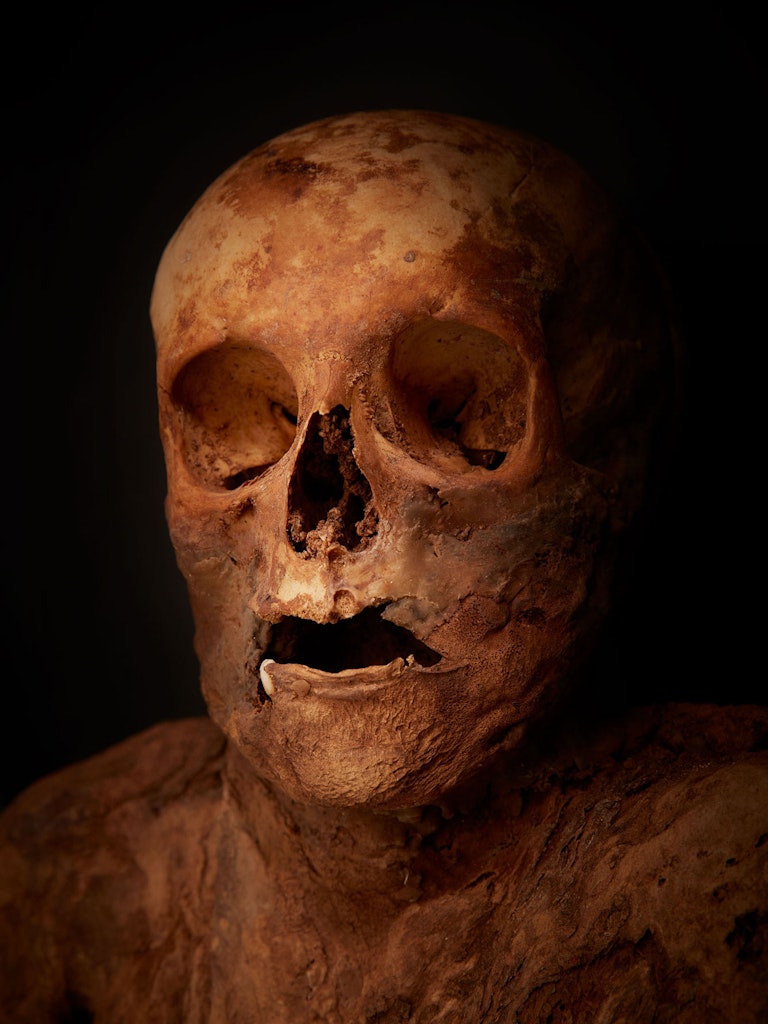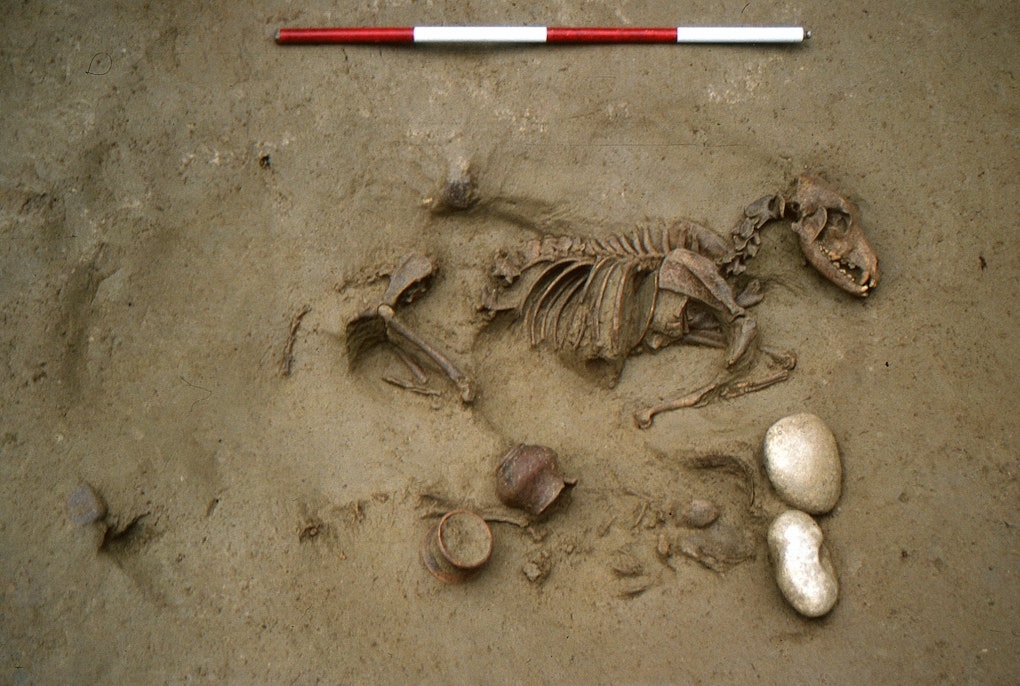The pastor's wife, Anna Catharina Bischoff, was born in Strasbourg in 1719 and died in Basel in 1787. The pathogen responsible for her disease was discovered by a research team with the help of a new method rarely used for ancient DNA.
Credit: Gregor Brändli | All rights reserved
magazine_ Article
Mystery of the Basel mummy solved
A research team can clarify which disease “the lady from the Barfüsserkirche” suffered from.
The well-preserved female mummy was found in 1975 during construction work in Basel's Barfüsserkirche. Since 2018, thanks to interdisciplinary cooperation under the direction of the Natural History Museum Basel, it is known that the woman Anna Catharina Bischoff, was a pastor's widow who died in 1787. At first it was suspected that she had suffered from syphilis, but now a research team has discovered an unknown pathogen in tissue samples.
Various clues had suggested syphilis, including changes in the skull bone though analysis by a team from the Institute for Mummy Studies found no traces of the syphilis pathogen. However, using a new method rarely used on ancient DNA until now, it was possible to assemble the genome of a still unknown non-tuberculous mycobacterium and rule out that the woman died of syphilis. The possibility of discovering new and rare microorganisms even in very old genetic material allows science to gain insights into important aspects of the development of human infectious diseases.
In the "de-novo assembly" method, base sequences are put together as a large puzzle to form a previously unknown whole genome.
This discovery has great potential for microbiome research, explains microbiologist and lead author of the study Mohamed Sarhan: “In order to assess how human bacterial colonization has changed, we need to know which microbes were present in the intestinal or oral flora of our ancestors.” With a method called “de-novo assembly”, in which base sequences are put together like a large jigsaw puzzle to form entire and previously unknown genomes, this is now possible, and the method is set to become increasingly important in modern medical diagnostics. Frank Maixner, a microbiologist at Eurac Research and head of the study, is convinced of this: “The method is set to become an important tool for elucidating the underlying causes of diseases for which the pathogen responsible is not yet known.” The bacterium that affected Anna Catharina Bischoff belongs to nontuberculous mycobacteria, which are part of the same family of which the agents that cause leprosy and tuberculosis also belong and which are generally considered environmental bacteria found in soil and water. These mycobacteria are rarely pathogenic, however have been known to cause pneumonia and other infections in the immunocompromised.
The pastor's wife probably did not die from the disease, but from the mercury treatment.
Mrs. Bischoff died at age 68, however, probably this had less to do with the infection than with the treatment she took against syphilis and other infections: mercury vapor or unguent were frequently used in Europe at the time. The concentration of mercury in Bischoff’s brain was extremely high. This high concentration and the evidence of the pathological lesion on the back of her head indicating syphilis disease, strengthened the initial hypothesis of syphilis disease assumed by the researchers. Most likely, the mercury also aided the mummification process. With the discovery of the pathogen, the picture of Anna Catharina Bischoff's life and death has taken a new direction and become clearer.
The Institute for Mummy Studies, together with the Natural History Museum Basel geneologist, had already made a decisive contribution to ascertaining who the woman was, by demonstrating a genetic relationship between her and living descendants, separated by 22 generations, to confirm the mummy’s identity.
 technical documentation
technical documentationThe study
The study has been published in BMC Biology and is freely accessible: A nontuberculous mycobacterium could solve the mystery of the lady from the Franciscan church in Basel, Switzerland )






